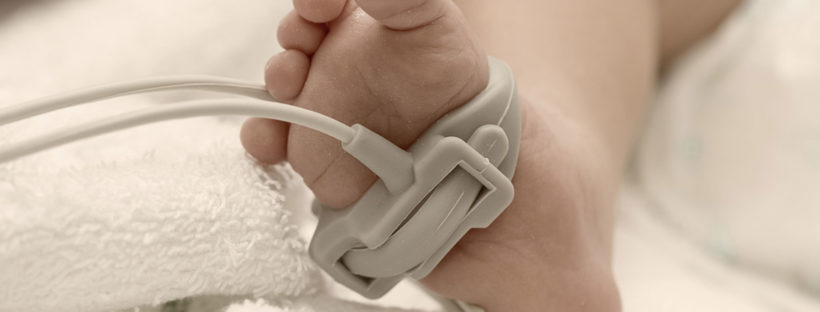by Michelle Collins, PhD, CNM, FACNM
The use of nitrous oxide as a labor analgesic has taken hold in the US in the past three years. It has been used widely in Europe for decades, with favorable results, along with comes educational information but all the perpetuation of myths.
10. Using nitrous oxide in labor is “just like” when you use it at the dental office. It’s not. In dental offices, the concentration of nitrous oxide to oxygen is variable, so the dentist can increase or decrease the concentration based on the patient’s needs. Dentists may use concentrations of nitrous oxide of up to 70%. The dentist also places a small mask over the patient’s nose, through which a continuous stream of nitrous oxide is delivered.
During labor nitrous oxide is only used at concentrations of 50% nitrous oxide to oxygen – no higher. And the stream of nitrous oxide is intermittently administered by the woman herself using either a mouthpiece or mask with a demand valve. The demand valve opens only when the woman inhales (breathes in) – which is when the gas is released. When the woman exhales (breathes out), the valve closes and the gas stream is stopped.
9. You will be confined to bed while using nitrous oxide. You will still be able to move around while using nitrous oxide during labor. About 10% of nitrous users may experience some dizziness, so your care providers will want to see you stand or move about without difficulty before they let you up on your own, but many women use nitrous oxide while standing, squatting, sitting in a rocking chair, or on a birth ball.
8. Continuous fetal monitoring will be required with nitrous oxide use. Whether you have continuous or intermittent fetal monitoring should be dictated by your obstetrical status, not because you are using nitrous oxide. In other words, if you are a candidate for intermittent monitoring, that does not have to change to continuous monitoring just because you begin using nitrous oxide.
7. If you choose to use nitrous oxide, you cannot use any other pain medications. A fair number of women who start out using nitrous go on to have an epidural placed at some later point in their labor. Using nitrous oxide earlier on allows you to maintain your mobility and stay upright, allowing the baby to move down well in your pelvis before being confined to bed with epidural anesthesia.
6. Nitrous oxide will stall your labor, or slow contractions. There has not been any research showing that nitrous slows down labor or causes contractions to be less strong or happen less often.
5. Nitrous oxide will harm the baby. Nitrous oxide is metabolized (processed) in your lung tissue, but because some of the gas passes into your blood stream, some can also pass through the placenta and go to your baby. However, studies have not shown adverse effects on babies of mothers who have used nitrous oxide in labor.
4. There is a point in labor when it is too late to use nitrous oxide. Actually, some women don’t begin using nitrous oxide until they are in the pushing stage. Other women don’t use it at all during labor, but find it very helpful if they need repair of any tears in their birth canal.
3. My family members can assist me with holding the nitrous oxide mask or mouthpiece if I get tired of holding it. As well-meaning as family members are, this is one area where they can’t help. A safety precaution for nitrous oxide use is that the laboring woman holds her own mask or mouthpiece. When she has had sufficient nitrous oxide, she won’t be able to bring her hand holding the device to her face. Allowing someone else to hold the mask/mouthpiece overrides this safety feature of nitrous oxide.
2. Nitrous oxide is offered at many hospitals and birth centers. Until 2011, there was really only one hospital in the US offering this option. Since that time, use of nitrous oxide has dramatically increased and there are currently over 100 hospitals and 50 birth centers offering nitrous oxide. Though it has come a long way, there is a long way to go to ensure that every woman who desires to use nitrous oxide in childbirth, has the opportunity.
1. Nitrous oxide makes you laugh (hence the nickname “laughing gas”). Despite the nickname, inhaling nitrous oxide doesn’t leave women laughing like hyenas! Because nitrous oxide decreases anxiety, it puts women more at ease and they may be more talkative and relaxed… but don’t count on side splitting laughter!
 Michelle Collins is currently Professor of Nursing and Director of the Nurse-Midwifery education program at Vanderbilt University School of Nursing. In addition to the teaching and administrative aspects of her job, she maintains an active clinical practice as part of the Vanderbilt School of Nursing faculty nurse-midwifery practice. Currently she is a blogger for Nashville Public Television for the popular series Call the Midwife.
Michelle Collins is currently Professor of Nursing and Director of the Nurse-Midwifery education program at Vanderbilt University School of Nursing. In addition to the teaching and administrative aspects of her job, she maintains an active clinical practice as part of the Vanderbilt School of Nursing faculty nurse-midwifery practice. Currently she is a blogger for Nashville Public Television for the popular series Call the Midwife.
Resource on Nitrous Oxide For Nurses
AWHONN has a Nurses Leading Implementation of Nitrous Oxide Use in Obstetrics webinar to describe the history of nitrous oxide use to present day and the necessary steps nurses need to take to initiate nitrous services at their institutions.
Nitrous Oxide as Labor Analgesia, Nursing for Women’s Health, Volume 16, Issue 5, pages 398–409, October / November 2012.




 Jessica L. Grenon is the Director of Continuing Education Services at The Conference Exchange, where she has worked with AWHONN since 2007. She, her husband, and their two young children enjoy traveling and spending time with their extended family, especially with her twelve nieces and nephews.
Jessica L. Grenon is the Director of Continuing Education Services at The Conference Exchange, where she has worked with AWHONN since 2007. She, her husband, and their two young children enjoy traveling and spending time with their extended family, especially with her twelve nieces and nephews.





